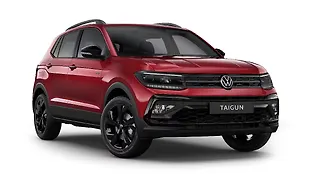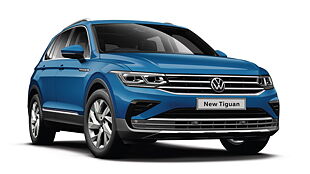Introduction
Volkswagen has pulled the covers off the Virtus sedan in India, the first country where it will be launched. It will soon be followed by its debut in international markets, and the brand aims to export it to about 25 regions from here in India. The Virtus is the spiritual successor to the Vento, which was the brand’s first product when it arrived in the country.

The new Volkswagen Virtus is based on the brand’s MQB-A0-IN platform which also underpins not just its sibling, the Taigun, but also one of its rivals and distant sibling, the Skoda Slavia. In terms of dimensions, the Virtus is almost similar to the latter, with the only exception being the length, courtesy of the longer front bumper. That said, let’s take a look at the car.
Exterior Design
The new Volkswagen Virtus is available in two versions, including Dynamic Line and Performance Line. The latter receives a host of cosmetic updates over the former, which we will be talking about a little later.

The fascia of the Virtus features a set of smoked LED headlamps with integrated LED DRLs, separated by a single slat grille with a chrome surround. Positioned further below is a wide air dam flanked by halogen fog lights on either side, as well as gloss black and chrome inserts for the front bumper.

The side profile of the sedan features body-coloured ORVMs, chrome inserts for the door handles, chrome window line, and 16-inch dual-tone alloy wheels. Customers will be able to choose from six colours including Wild Cherry Red, Curcuma Yellow, Candy White, Reflex Silver, Carbon Steel Grey, and Rising Blue Metallic.

The GT Line of the Virtus benefits from GT badging on the grille, blacked-out wheels, roof, and ORVMs, and GT Line badging on the front fenders. Also on offer are red brake calipers.

Towards the rear, the spiritual successor of the Vento features wrap-around smoked LED tail lights, Virtus lettering on the boot-lid, which also houses the number plate recess, and a chrome insert for the rear bumper, along with reflectors. The GT Line stands out with a subtle black lip spoiler on the boot-lid.
Interiors and feature list
Get inside the Volkswagen Virtus and you are greeted by a similar beige and black interior theme, which is visible on the dashboard as well as the seats, and gloss black inserts for the centre console. The GT Line, on the other hand, features black upholstery with contrast red stitching for the seats while the brushed aluminium inserts make way for red inserts.

Talking about the features, the sedan is equipped with an electric sunroof, ventilated front seats, automatic climate control, wireless charging, a fully-digital instrument console, a 10-inch touchscreen infotainment system with wireless Apple CarPlay and Android Auto, eight speakers, an engine start-stop button, paddle shifters, a leather-wrapped multi-function steering wheel, and cruise control.

Safety features include six airbags, ABS with EBD, MCB, ESC, reverse parking camera, rear parking sensors, hill-hold control, tyre deflation warning, and brake disc wiping.
Engine and specifications
Under the hood, the Volkswagen Virtus will be propelled by a set of TSI engines. These include a 1.0-litre, three-cylinder unit producing 114bhp and 175Nm of torque, paired to a six-speed manual unit or a six-speed torque converter automatic unit.

Also on offer is a 1.5-litre, four-cylinder motor with active cylinder technology that produces 148bhp and 250Nm of torque, mated exclusively to a seven-speed DCG automatic transmission. We are likely to see the latter get the option of a six-speed manual unit at launch.
Conclusion
Volkswagen is expected to launch the Virtus sedan in May 2022, with deliveries likely to start soon after. The Virtus could be priced at a premium of Rs 30,000 when compared to the Slavia, but it is expected to undercut another rival, the new Honda City, by the same margin.

A few other notable rivals include the Maruti Suzuki Ciaz, Hyundai Verna, and the fourth-gen Honda City. How good is the Virtus to drive? We’ll be driving it soon to find out. So, stay tuned for our review.

![Volkswagen Virtus [2022-2023] Front View Volkswagen Virtus [2022-2023] Front View](https://imgd.aeplcdn.com/642x361/n/cw/ec/113753/volkswagen-virtus-front-view0.jpeg?isig=0&wm=1&q=80)
![Volkswagen Virtus [2022-2023] Right Front Three Quarter Volkswagen Virtus [2022-2023] Right Front Three Quarter](https://imgd.aeplcdn.com/642x361/n/cw/ec/113753/volkswagen-virtus-right-front-three-quarter27.jpeg?isig=0&wm=1&q=80)
![Volkswagen Virtus [2022-2023] Right Front Three Quarter Volkswagen Virtus [2022-2023] Right Front Three Quarter](https://imgd.aeplcdn.com/642x361/n/cw/ec/113753/volkswagen-virtus-right-front-three-quarter3.jpeg?isig=0&wm=1&q=80)
![Volkswagen Virtus [2022-2023] Rear View Volkswagen Virtus [2022-2023] Rear View](https://imgd.aeplcdn.com/642x361/n/cw/ec/113753/volkswagen-virtus-rear-view11.jpeg?isig=0&wm=1&q=80)
![Volkswagen Virtus [2022-2023] Left Side View Volkswagen Virtus [2022-2023] Left Side View](https://imgd.aeplcdn.com/642x361/n/cw/ec/113753/volkswagen-virtus-left-side-view26.jpeg?isig=0&wm=1&q=80)
![Volkswagen Virtus [2022-2023] Left Front Three Quarter Volkswagen Virtus [2022-2023] Left Front Three Quarter](https://imgd.aeplcdn.com/642x361/n/cw/ec/113753/volkswagen-virtus-left-front-three-quarter14.jpeg?isig=0&wm=1&q=80)
![Volkswagen Virtus [2022-2023] Left Front Three Quarter Volkswagen Virtus [2022-2023] Left Front Three Quarter](https://imgd.aeplcdn.com/642x361/n/cw/ec/113753/volkswagen-virtus-left-front-three-quarter9.jpeg?isig=0&wm=1&q=80)
![Volkswagen Virtus [2022-2023] Front View Volkswagen Virtus [2022-2023] Front View](https://imgd.aeplcdn.com/642x361/n/cw/ec/113753/volkswagen-virtus-front-view2.jpeg?isig=0&wm=1&q=80)
![Volkswagen Virtus [2022-2023] Image Volkswagen Virtus [2022-2023] Image](https://imgd.aeplcdn.com/272x153/n/cw/ec/101055/virtus-exterior-right-front-three-quarter.jpeg?isig=0&q=80)

























